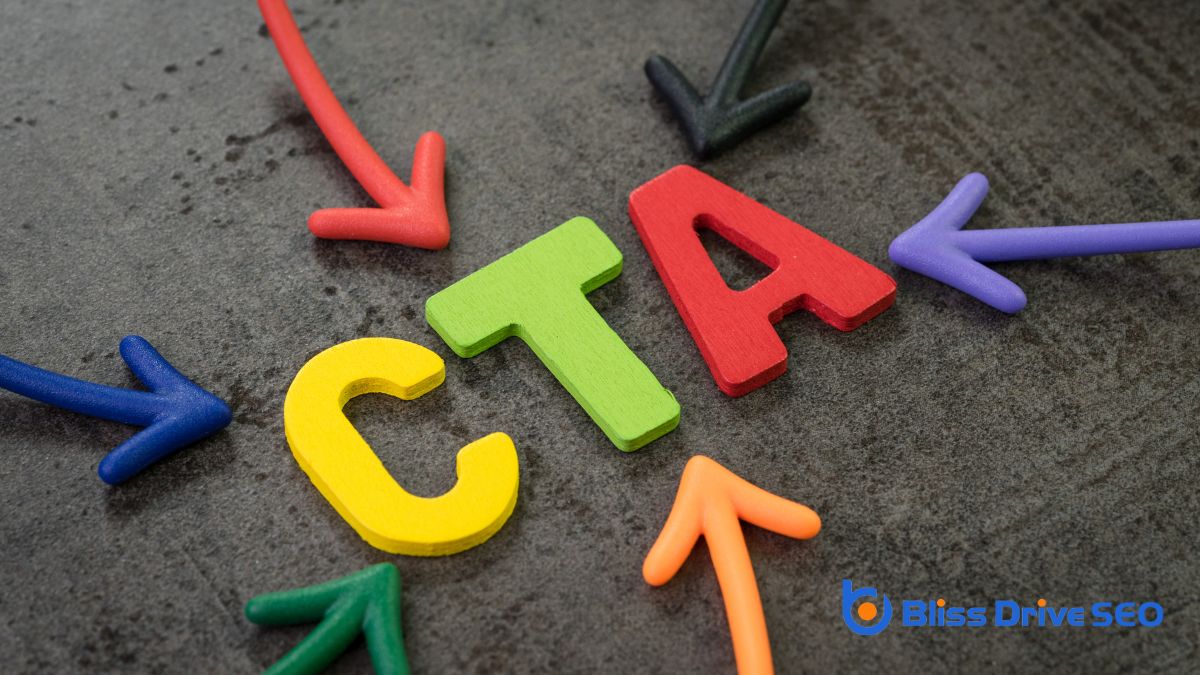Digital Marketing Services
Learn More About Us

When it comes to placing calls-to-action (CTAs) effectively, you might wonder where to start. Should they always be above the fold, or can strategic placement within content drive better engagementThe interactions that users have with a brand’s content on social media.? Research shows that each method has distinct advantages, from leveraging user momentum at the end of a webpage to naturally integrating CTAs within your content. You'll find that utilizing sidebar placementsSpecific websites or locations within websites where ads can appear. and pop-ups can also play an essential role. But how do these strategies fare on mobile devices, and what about the impact of A/B testingA method of comparing two versions of a web page or app against each other to determine which one pe... and personalizationTailoring content and offers to individual users based on their behavior, preferences, or demographi...? Let's explore these insights to optimize your approach.

Understanding the importance of calls to action (CTAs) is vital for any successful online marketing strategy. You need to recognize that a well-crafted CTA doesn't just sit idly on your webpage; it actively drives user engagementThe level of interaction and involvement users have with social media content. and boosts conversion rates. By strategically placing CTAs, you guide your website visitors towards desired actions, whether it's making a purchase, signing up for a newsletterA regularly distributed email containing news, updates, and content relevant to subscribers., or downloading a resource.
To effectively leverage CTAs, you must first understand customer behavior and preferences. What motivates your audience? What are their pain points? Gathering this information allows you to design CTAs that resonate with your visitors on a personal level.
Next, data analysisThe process of inspecting, cleaning, transforming, and modeling data to discover useful information.... plays a significant role. By examining how different CTAs perform, you can identify which ones are most effective and optimize your strategies accordingly. Look at metrics like click-through rates and conversion rates to determine what's working and what needs improvement.
In short, recognizing the importance of CTAs, coupled with understanding customer behavior and applying data-driven insights, will greatly enhance your online marketing efforts. With these elements in place, your CTAs won't just attract clicks but drive meaningful actions.
When it comes to maximizing the effectiveness of your CTAs, placing them at the top is a game-changer. CTAs at the top increase visibility and engagement, as 57% of users spend more time on content in this area. This prime real estate guarantees that your calls-to-action have a 91% chance of being seen, making them essential for prompting immediate user actions.
By positioning your CTAs at the top, you tap into the tendency of 70-80% of users to focus on this portion of your webpage. This strategic placement helps create impactful CTAs that stand out, driving higher engagement.
For mobile users, who spend 57% of their browsing time at the top, this tactic is even more crucial. It ensures that your CTAs are visible without the need for scrolling, which is important on smaller screens.
Websites that implement top CTAs report higher conversion rates, with 66% of leads generated from this placement. By making your CTAs easy to spot and act upon, you effectively guide users toward desired actions, boosting your overall conversion rates. Focus on top placement to maximize the impact of your CTAs.
When you place CTAs within content, you naturally enhance engagement by integrating them seamlessly into the user's reading experience. Contextual relevance is vital here, as well-placed CTAs that align with the content can leadA potential customer referred by an affiliate who has shown interest in the product or service but h... to higher conversion rates.
Integrating call-to-actions (CTAs) naturally within your content can dramatically enhance user engagement and drive conversions. By weaving CTAs seamlessly into your articles, blogs, and web pages, you can achieve up to a 121% boost in engagement. This natural CTA placement makes users 30% more likely to click, as it feels like a part of the content rather than an intrusive interruption.
One effective placement strategy involves incorporating content-integrated CTAs that align with the flow of your narrative. This approach not only improves the user experience but also results in a 20% higher conversion rateThe percentage of visitors who complete a desired action, such as making a purchase or filling out a... compared to standalone CTAs. Think of it as leading your audience on a journey where the next logical step is to engage with your CTA.
Moreover, integrating CTAs within your content can lead to a 40% increase in lead generationThe process of attracting and converting prospects into potential customers.. This is because users are more inclined to follow through on actions that feel like a natural extension of their reading experience. Consequently, this results in a 25% boost in overall website conversions.
Contextual relevance in call-to-action (CTA) placement isn't just a best practice; it's a game-changer. When you place CTAs within relevant content, you're not only enhancing engagement but also significantly boosting your metrics.
Imagine a scenario where your audience is deeply immersed in your content, and a CTA appears seamlessly integrated at the perfect moment. This approach can result in a staggering 121% increase in engagement.
Contextual CTAs don't just engage; they also drive action. By placing your CTAs where they naturally fit within the content, you can achieve 42% higher click-through rates compared to generic placements.
Your users are 50% more likely to interact with CTAs that blend seamlessly into the flow of your content, leading to a more intuitive and less disruptive experience.
This strategy doesn't just improve click-through rates; it also enhances conversion rates by 23%. When CTAs are contextually relevant, they feel like a natural extension of the user journey, making it easier for users to take the next step.
Ultimately, this can lead to a 33% increase in overall website conversions. Embracing contextual relevance in your CTA placements is a surefire way to maximize your website's potential.
Strategically situating CTAs within your content can remarkably enhance both visibility and engagement. By aligning with the user's reading flow, you can make sure that your CTAs catch the reader's eye at just the right moment. It's all about strategic content integration—making your CTAs feel like a natural part of the narrative rather than an interruption.
When you seamlessly integrate CTAs within your content, you enhance the user experience, making it more probable that visitors will take the desired actions. This approach not only boosts visibility but also significantly enhances conversion rates and user interactionAny action taken by a user on social media, such as likes, comments, shares, or retweets.. Effective CTA placement can guide users smoothly toward your goals without disrupting their engagement with your content.
Data shows that well-placed CTAs within content can lead to a notable increase in click-through rates. To achieve this, you need to take into account where your readers are most engaged and incorporate CTAs at those strategic points. By doing so, you maintain a natural reading flow, keeping the user's journey fluid and enjoyable.
Incorporating CTAs thoughtfully within your content can greatly enhance overall website performance, making your calls-to-action more compelling and effective. Remember, strategic content integration is key to maximizing both engagement and conversion rates.
Placing CTAs at the end of a webpage can be a game-changer for capturing the attention of engaged readers. When users reach this section, they've already invested time in your content, making them more likely to take action. This end of webpage placement leverages the momentum and interest generated throughout their journey on the page.
CTAs at the end can lead to higher conversion rates as they're strategically placed where users are primed for decision making. This strategic placement encourages user engagement and guides them towards the next step seamlessly.
Consider the emotional impact of this approach:

To boost your conversion rates, you can strategically place CTAs in the sidebar, which can lead to up to 20% higher conversions.
For even greater impact, use pop-ups sparingly and time them well to potentially increase conversions by 50% or more.
Amidst the myriad of digital marketing strategies, sidebars and pop-ups stand out as potent tools for enhancing Call-to-Action (CTA) visibility. When you strategically place CTAs in your sidebar, you can capture visitor attention without disrupting the flow of your main content. This approach has been shown to increase conversion rates by a large margin.
Pop-ups, on the other hand, can boost conversion rates by up to 2100% when they're strategically placed, especially if timed for exit intent to prevent visitors from leaving without taking action.
Utilizing both sidebars and pop-ups together can maximize CTA visibility and effectiveness. To implement these tactics successfully, consider the following:
Effective pop-up timing can make or break your website's engagement and conversion rates. To maximize effectiveness, you shouldn't display pop-ups immediately when users arrive. Instead, let them first engage with your content. Timing pop-ups to appear after users have spent a certain amount of time on your site is a great strategy. It allows them to become invested before being prompted, which can greatly boost engagement.
Consider pop-ups that appear as users scroll down the page. This method captures attention without disrupting the browsing experience. Users are already engaged, and the pop-up feels less intrusive, making it more likely they'll interact with it.
Sidebars offerThe specific product or service being promoted by affiliates. another effective placement for pop-ups. Since they don't obstruct the main content, users can continue their browsing uninterrupted while still noticing your call-to-action. Strategically timed pop-ups in sidebars can enhance user interactions and lead to higher conversion rates.
To put it simply, timing is everything. By waiting until users have engaged with your site, whether through time spent or scrolling, and utilizing sidebars for unobtrusive pop-ups, you can create a seamless, effective experience that boosts both engagement and conversion rates.
When it comes to optimizing your CTAs for mobile devices, it's important to bear in mind that over half of all website visits globally come from mobile traffic. To capture this significant audience, you need to focus on mobile optimizationDesigning and formatting web content to ensure it performs well on mobile devices..
Start by guaranteeing your CTAs are easily clickable. Small buttons can frustrate users, so make them large enough to tap comfortably. A responsive designA web design approach that makes web pages render well on a variety of devices and window or screen ... is vital; your CTAs should look and function well on various screen sizes and mobile devices.
Testing is another necessary step. Test your CTAs on different mobile devices to identify any issues that could hinder performance. This approach ensures a seamless user experience, which can significantly enhance your conversion rates. Users on mobile devices have different behaviors and expectations, and meeting these can make a notable impact.
Here's why it's important:
After ensuring your CTAs are optimized for mobile devices, the next step is to fine-tune their placement using A/B testing methods. A/B testing involves comparing two versions of a webpage to see which one performs better regarding call-to-action placement. By experimenting with different placements, you can gather pivotal data on user behavior and preferences.
Start by testing variations such as button color, size, and location. For example, you might compare a red button in the header against a blue button in the footer. This data will help you understand what attracts users' attention and encourages them to take action.
Analyzing these results will guide you in optimizing your call-to-action placement for increased conversions and engagement.
The insights gained from A/B testing can notably improve your website performance. You'll know exactly where to place your CTAs to maximize user interaction. This method helps you make data-driven decisions rather than relying on guesswork, ensuring your marketing strategies are as effective as possible.
Harnessing the power of personalization in your call-to-action (CTA) strategies can greatly enhance your website's performance. Personalized CTAsCalls to action that are customized based on user behavior, preferences, or demographics. have proven to increase conversions by up to 202% compared to generic ones. By tailoring your CTAs based on user behavior and preferences, you can significantly improve engagement and click-through rates.
Using dynamic contentEmail content that changes based on the recipient's preferences or behavior. for personalized CTAs makes sure that your messages resonate better with users, leading to boosted overall sales. This approach not only creates a more tailored and relevant experience for different audience segments but also fosters higher levels of customer satisfaction and loyalty.
Consider the emotional impact personalized CTAs can have:

Evaluating the effectiveness of your call-to-action (CTA) placement strategies hinges on a thorough analysis of performance metricsKey indicators used to measure the effectiveness of affiliate marketing efforts, such as clicks, con.... To start, you need to focus on key performance metrics such as click-through rates and conversion rates. These metrics will tell you how well your CTAs are performing and if they're driving the desired user actions.
Delve into user behavior data to uncover which CTA placements generate the most engagement and conversions. By understanding how visitors interact with your site, you can identify the most effective spots for your CTAs.
Implementing A/B testing allows you to compare different CTA placements and see which ones yield better performance metrics. This iterative approach helps you refine your strategies based on concrete data.
Utilize heatmaps and click tracking tools to visualize user interactions with your CTAs. These tools offer insights that can guide your optimization decisions, ensuring that your CTAs are placed where they're most likely to be noticed and clicked.
Additionally, keep an eye on KPIs like bounce rates and time on page. These indicators can reveal whether your CTA placements are engaging visitors effectively or if adjustments are necessary.
How does page layout affect CTA placement?
Should a CTA be placed near the top or bottom of the page?
Does the complexity of the offer affect where the CTA should be placed?
How do multiple CTAs affect user behavior and conversion rates?
You've got the keys to boost your conversions now. By positioning CTAs strategically—whether above the fold, within content, or at the end of a webpage—you'll keep users engaged. Don't forget to leverage sidebars and pop-ups, optimize for mobile, and personalize your approach. A/B testing and analyzing performance metrics will help you refine your strategies further. Start implementing these tips, and you'll see your engagement and conversion rates soar.
